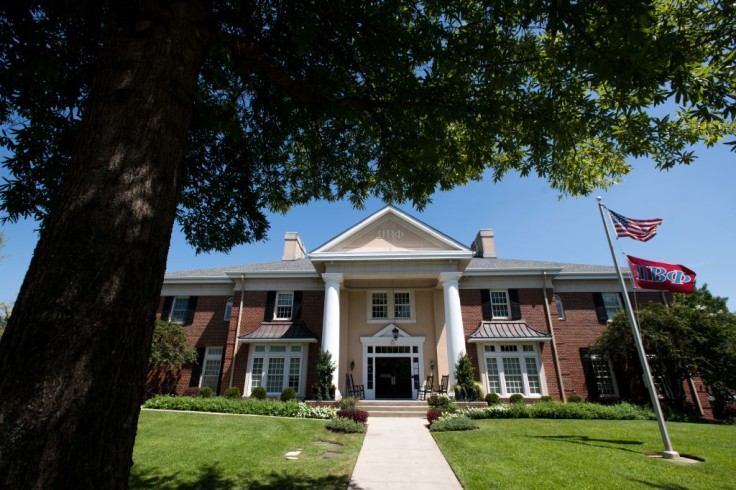Southern Universities See 91% Surge in Northeast Students Fleeing Cold for Football and Greek Life
By
A seismic shift is underway in American higher education, and it has nothing to do with academic rankings or research prestige. Thousands of students from America's Northeast are abandoning traditional college dreams and heading South—drawn by sunshine, football culture, and a campus lifestyle that's become impossible to ignore on social media.
The numbers tell a remarkable story: Between 2014 and 2023, universities in the Southeastern Conference (SEC)—a coalition of 16 powerhouse schools including the University of South Carolina, University of Alabama, University of Mississippi, and University of Tennessee—saw a staggering 91% increase in undergraduate students from northeastern states.
This isn't a gradual trend. It's a mass migration that's reshaping the American university landscape and challenging long-held assumptions about what students actually want from their college experience.
South Carolina: The Epicenter of the Exodus
The University of South Carolina (USC) exemplifies the transformation. The institution has experienced a 90% surge in northeastern students over the same period, with out-of-state enrollment jumping 58% in just the past decade. Overall enrollment has grown 46%, pushing the university to a record-breaking 40,000 students in 2024.
The largest pipelines flow from North Carolina, New York, New Jersey, and Pennsylvania—states that once reliably sent their top students to prestigious northeastern institutions like the Ivies, MIT, or elite liberal arts colleges.
Sean Carroll, a 21-year-old USC senior from New York and member of the Chi Psi fraternity, told The Sunday Times about the demographic shift: "All my friends are from Jersey, Philly, New York, Maryland. People always ask me, 'was it a culture shock?' but there's so many people from the north that you don't even realize you're in South Carolina. It's just so trendy."
The transformation is so complete that Carroll's 200-member fraternity includes only ten students from south of Virginia. The campus has essentially developed parallel Northern and Southern social ecosystems.
"Northern fraternities hang with northern fraternities, southern with southern," Carroll explained. "Even the tailgate lots are divided."
The Social Media Effect
While demographics and economics play roles in this shift, there's no denying the influence of social media—particularly TikTok and Instagram—in making Southern campus life aspirational for northeastern teenagers.
Cameron McManus, a high school senior from the Washington, D.C. suburbs, told Fortune Magazine he'd been eyeing Clemson University, USC, or the University of North Carolina at Chapel Hill after scrolling through videos featuring sports spectacles, Greek life, and perpetual warm weather.
"You can be outside all months of the year," McManus said simply.
These aren't carefully curated university marketing campaigns. They're organic content created by students themselves: sorority rush week videos that rack up millions of views, game day footage showing 100,000-strong stadiums in perfect autumn weather, beachside spring break trips, and outdoor social events in February while northeastern campuses languish under snow.
The virality of "Southern college culture" has created a feedback loop. More students see the content, more students apply, more students create similar content, and the cycle accelerates.
The Numbers Don't Lie
Since 2019, applications to Southern colleges have risen 50%, compared to less than 30% for schools in New England and the mid-Atlantic, according to Common Application data analyzed by Fortune Magazine.
This divergence reflects not just growing Southern appeal but increasing difficulty gaining admission to the nation's most elite universities. With students now applying to more colleges than ever before, many are reconsidering whether chasing Ivy League prestige is worth the diminishing odds and mounting stress.
Why face rejection from Yale when you could spend four years at a vibrant campus where football Saturdays are cultural events, Greek life offers instant community, and the weather cooperates nine months a year?
The Campus Culture Divide
The migration highlights a fundamental split in what students want from university life. The Northeast's elite institutions have long emphasized academic rigor, intellectual discourse, and career preparation. Campus social life exists, but it's rarely the central feature.
Southern SEC schools offer something different: a complete collegiate experience where academics coexist with robust social traditions, major sports culture, and outdoor lifestyle opportunities. For many students, particularly those not bound for graduate school or elite professional tracks, this represents a more appealing package.
The Greek life component is particularly significant. While northeastern schools have often scaled back fraternity and sorority influence amid concerns about exclusivity and safety, many Southern universities have embraced and formalized these systems, creating structured social ecosystems that appeal to students seeking community and tradition.
States Push Back
The influx hasn't been universally welcomed. As Southern schools become more selective and out-of-state students occupy more seats, local residents and politicians have begun pushing back.
Clemson University's acceptance rate has plummeted from 52% to 38% over the past decade—still more generous than most northeastern counterparts, but a dramatic tightening that's locked out many South Carolina residents who once considered admission guaranteed.
North Carolina has implemented a strict cap limiting out-of-state enrollment to 18% at its public universities, protecting access for local students even as demand from elsewhere skyrockets.
Texas has gone even further, offering guaranteed admission to its public universities for the top 10% of high school graduates—a policy designed to ensure geographic and economic diversity while accommodating a growing population.
These protectionist measures reflect genuine tensions. State taxpayers fund public universities with the expectation that their children will benefit. When affluent out-of-state students—often able to pay full tuition—displace local applicants, it raises questions about institutional mission and fairness.
The Economic Engine
For universities themselves, the trend represents a financial windfall. Out-of-state students typically pay two to three times more in tuition than in-state residents, providing crucial revenue that subsidizes research, facilities, and financial aid.
A northeastern student paying $35,000 annually at South Carolina generates significantly more revenue than a local student paying $12,000. Multiply that across thousands of students over four years, and you're looking at hundreds of millions in additional income.
This economic incentive ensures universities will continue actively recruiting outside their traditional geographic footprints, even as state legislatures attempt to impose limitations.
A Permanent Shift?
The question now is whether this represents a permanent realignment or a temporary trend subject to reversal.
Several factors suggest durability. Climate considerations will only intensify as winters remain harsh in the Northeast. Social media shows no signs of losing its influence over teenage decision-making. And Southern universities are investing heavily in facilities, faculty, and programs to match their newfound popularity, creating genuine academic credentials to accompany the lifestyle appeal.
However, economic downturns, changing political climates, or shifts in career preparation needs could alter the calculation. If graduates from Southern schools face employment challenges compared to their northeastern peers, or if the prestige gap proves more consequential than current students anticipate, the flow could slow or reverse.
For now, though, the Great Southern Migration shows no signs of slowing. As one USC student put it: "Why would I want to spend four years freezing when I could be outside in February?"
It's a simple question that thousands of northeastern families are answering by packing their kids off to South Carolina, Alabama, Tennessee, and beyond—chasing sunshine, touchdowns, and the college experience they see on their screens.
The Ivy League will survive. But its cultural dominance over American higher education? That may have already headed South.
© 2025 University Herald, All rights reserved. Do not reproduce without permission.








